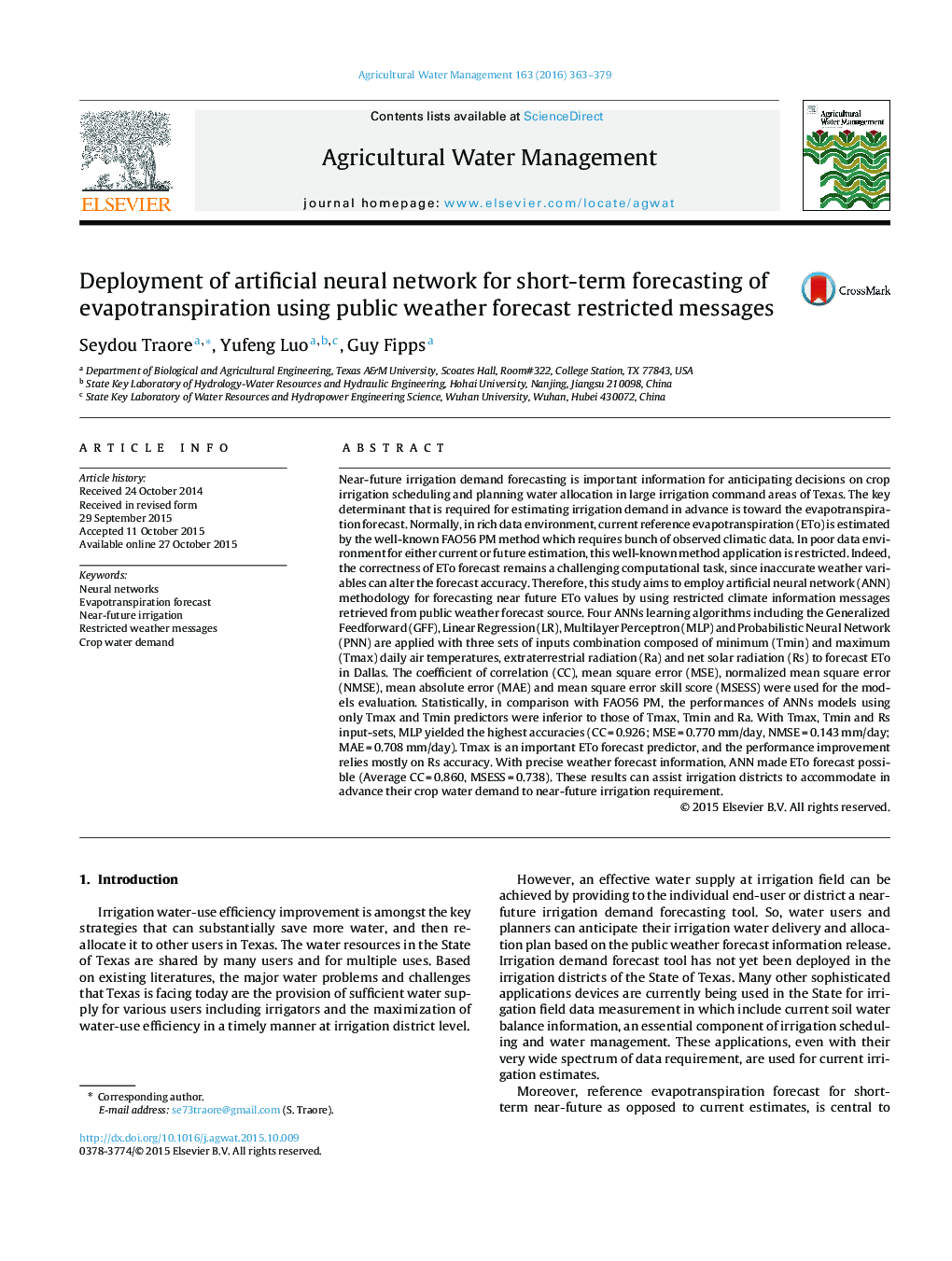| کد مقاله | کد نشریه | سال انتشار | مقاله انگلیسی | نسخه تمام متن |
|---|---|---|---|---|
| 4478365 | 1622916 | 2016 | 17 صفحه PDF | دانلود رایگان |
• We deploy four neural networks to forecast short-term ETo in near future.
• ETo is forecasted using restricted messages from public weather forecast.
• Tmax and solar radiation are quite good ETo forecast predictors.
• Multilayer Perceptron network is found to be a powerful ETo forecasting tool.
• These results appeared useful for districts to anticipate their irrigation plan.
Near-future irrigation demand forecasting is important information for anticipating decisions on crop irrigation scheduling and planning water allocation in large irrigation command areas of Texas. The key determinant that is required for estimating irrigation demand in advance is toward the evapotranspiration forecast. Normally, in rich data environment, current reference evapotranspiration (ETo) is estimated by the well-known FAO56 PM method which requires bunch of observed climatic data. In poor data environment for either current or future estimation, this well-known method application is restricted. Indeed, the correctness of ETo forecast remains a challenging computational task, since inaccurate weather variables can alter the forecast accuracy. Therefore, this study aims to employ artificial neural network (ANN) methodology for forecasting near future ETo values by using restricted climate information messages retrieved from public weather forecast source. Four ANNs learning algorithms including the Generalized Feedforward (GFF), Linear Regression (LR), Multilayer Perceptron (MLP) and Probabilistic Neural Network (PNN) are applied with three sets of inputs combination composed of minimum (Tmin) and maximum (Tmax) daily air temperatures, extraterrestrial radiation (Ra) and net solar radiation (Rs) to forecast ETo in Dallas. The coefficient of correlation (CC), mean square error (MSE), normalized mean square error (NMSE), mean absolute error (MAE) and mean square error skill score (MSESS) were used for the models evaluation. Statistically, in comparison with FAO56 PM, the performances of ANNs models using only Tmax and Tmin predictors were inferior to those of Tmax, Tmin and Ra. With Tmax, Tmin and Rs input-sets, MLP yielded the highest accuracies (CC = 0.926; MSE = 0.770 mm/day, NMSE = 0.143 mm/day; MAE = 0.708 mm/day). Tmax is an important ETo forecast predictor, and the performance improvement relies mostly on Rs accuracy. With precise weather forecast information, ANN made ETo forecast possible (Average CC = 0.860, MSESS = 0.738). These results can assist irrigation districts to accommodate in advance their crop water demand to near-future irrigation requirement.
Journal: Agricultural Water Management - Volume 163, 1 January 2016, Pages 363–379
